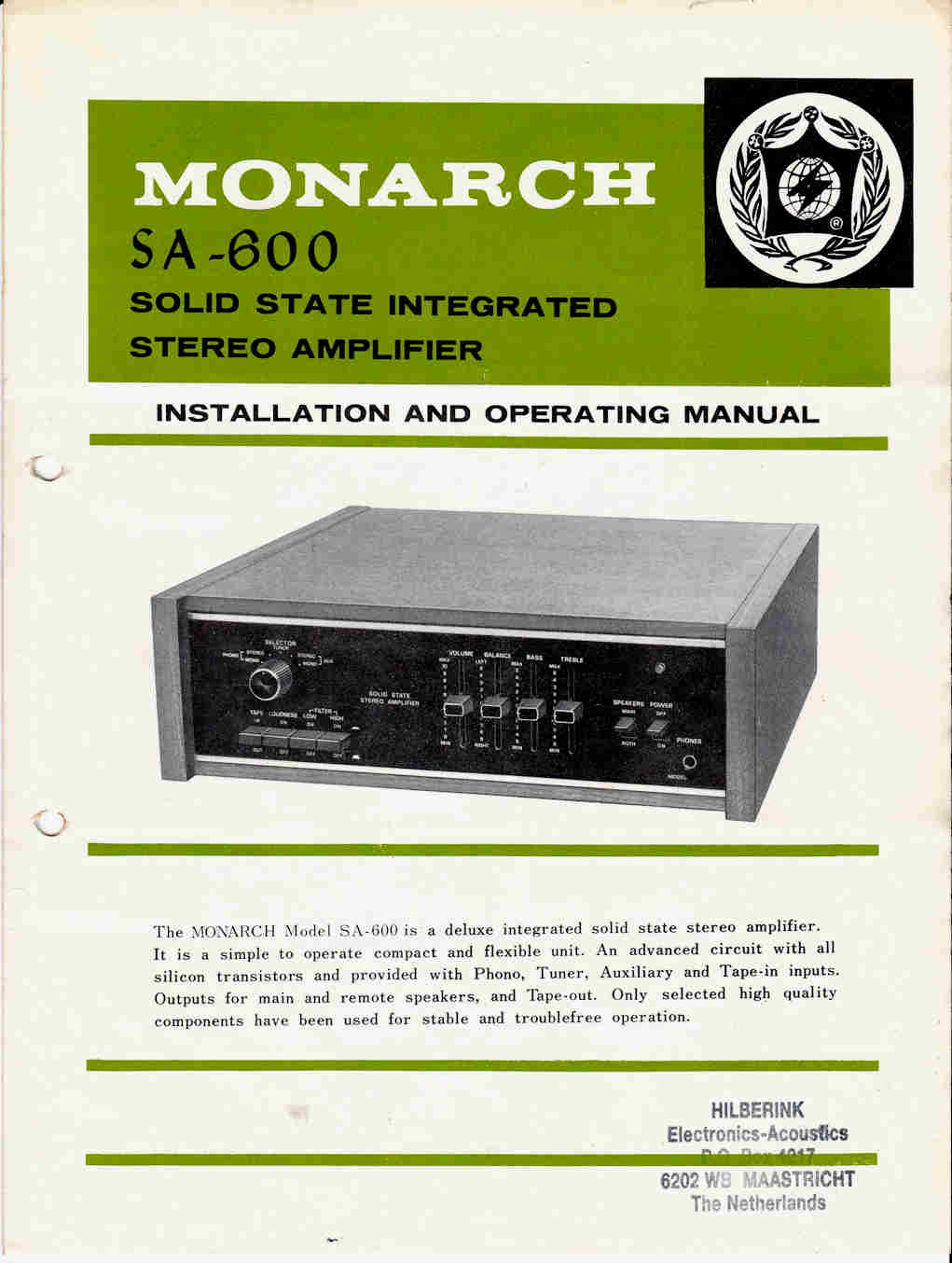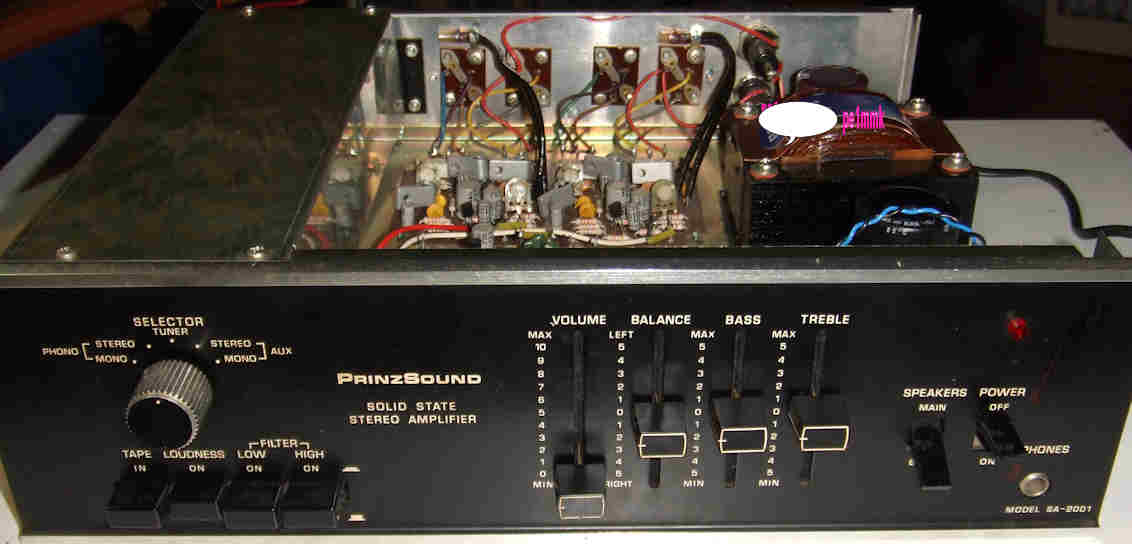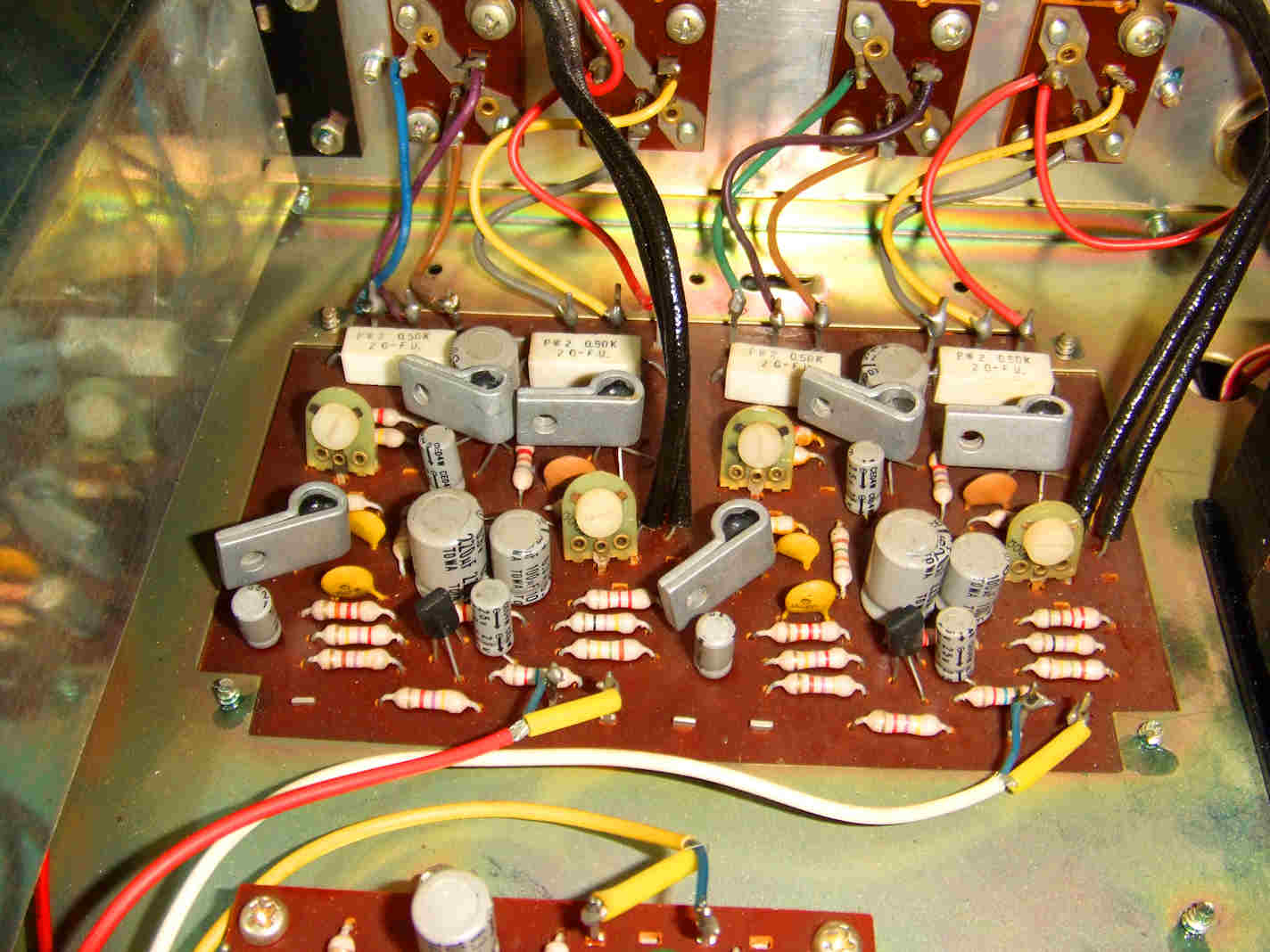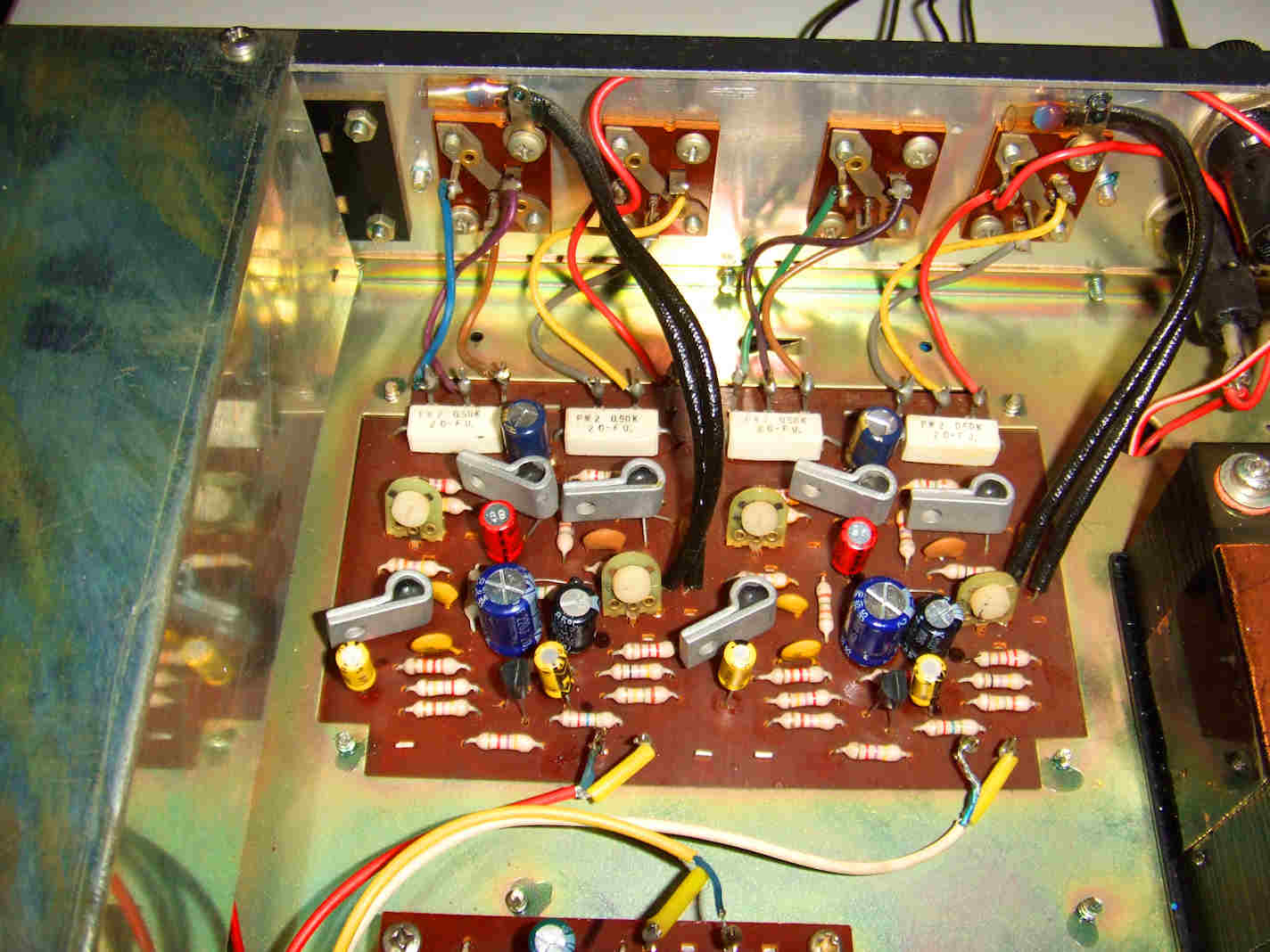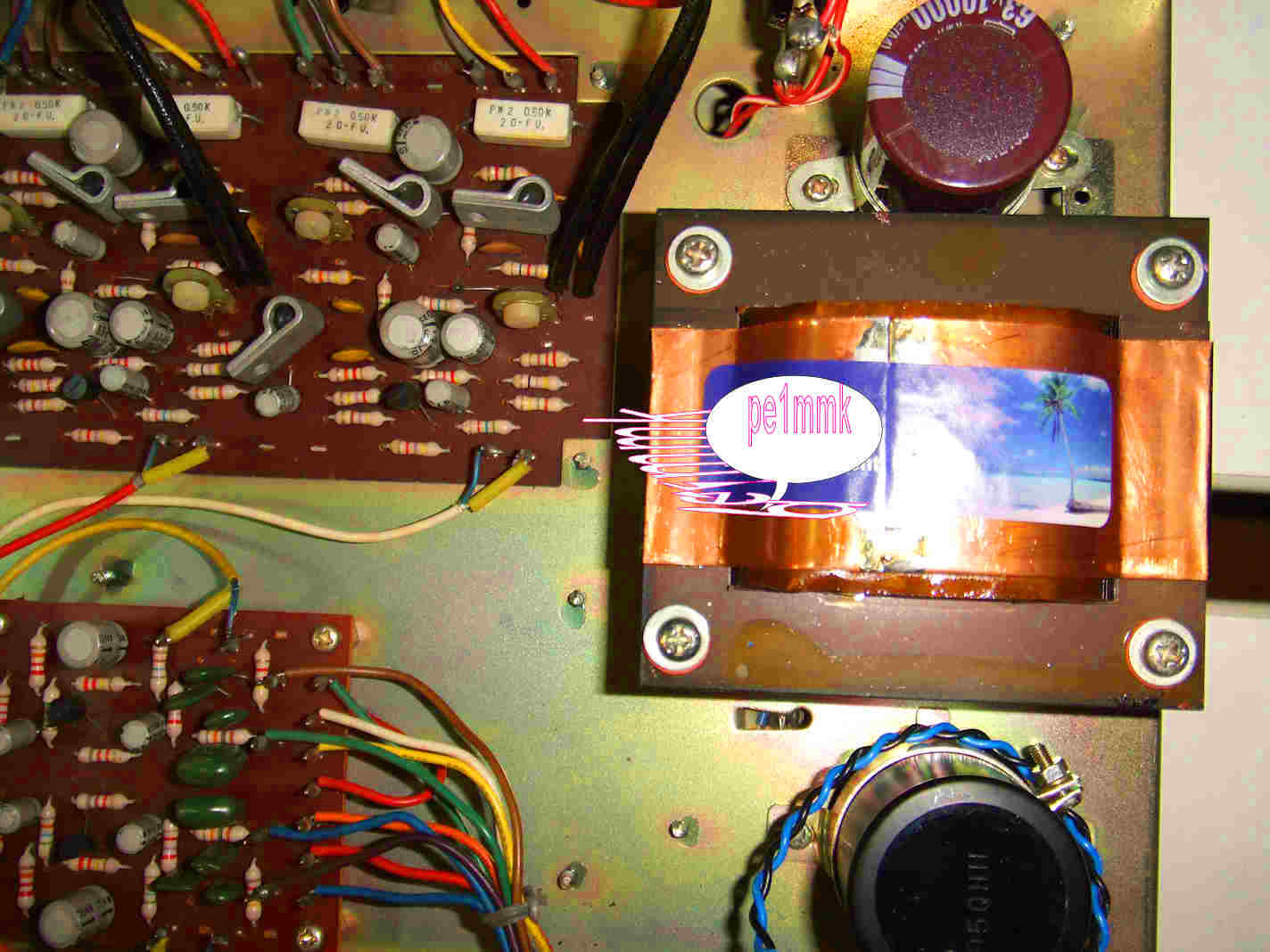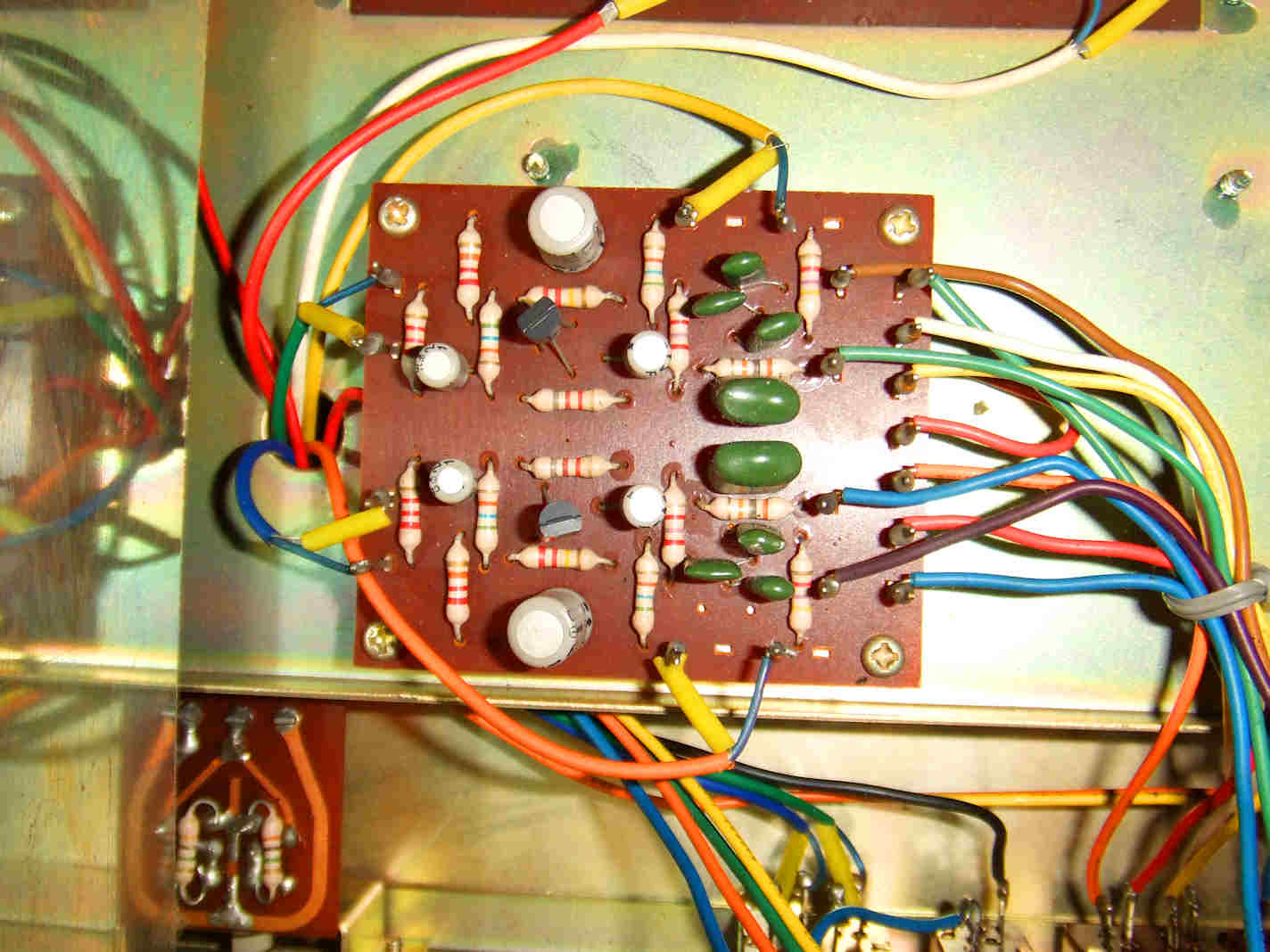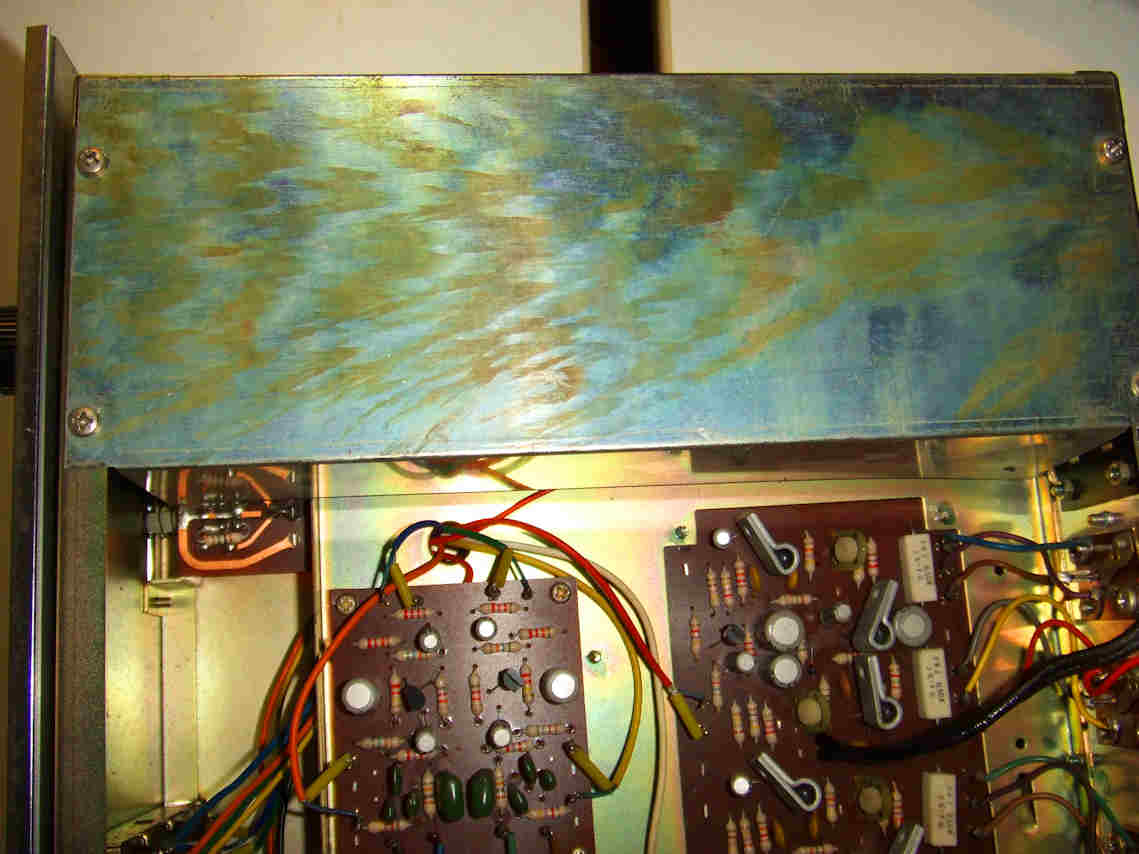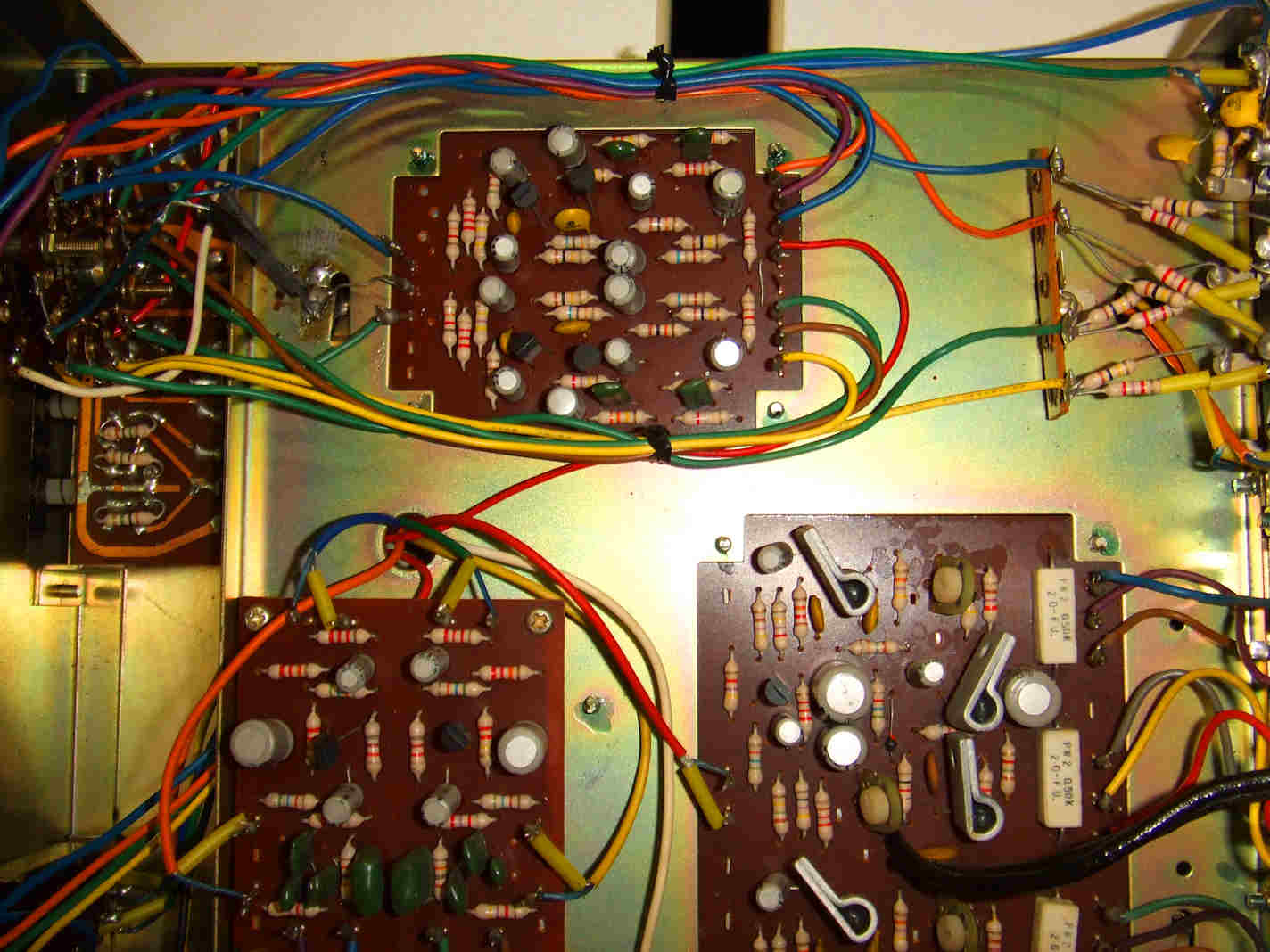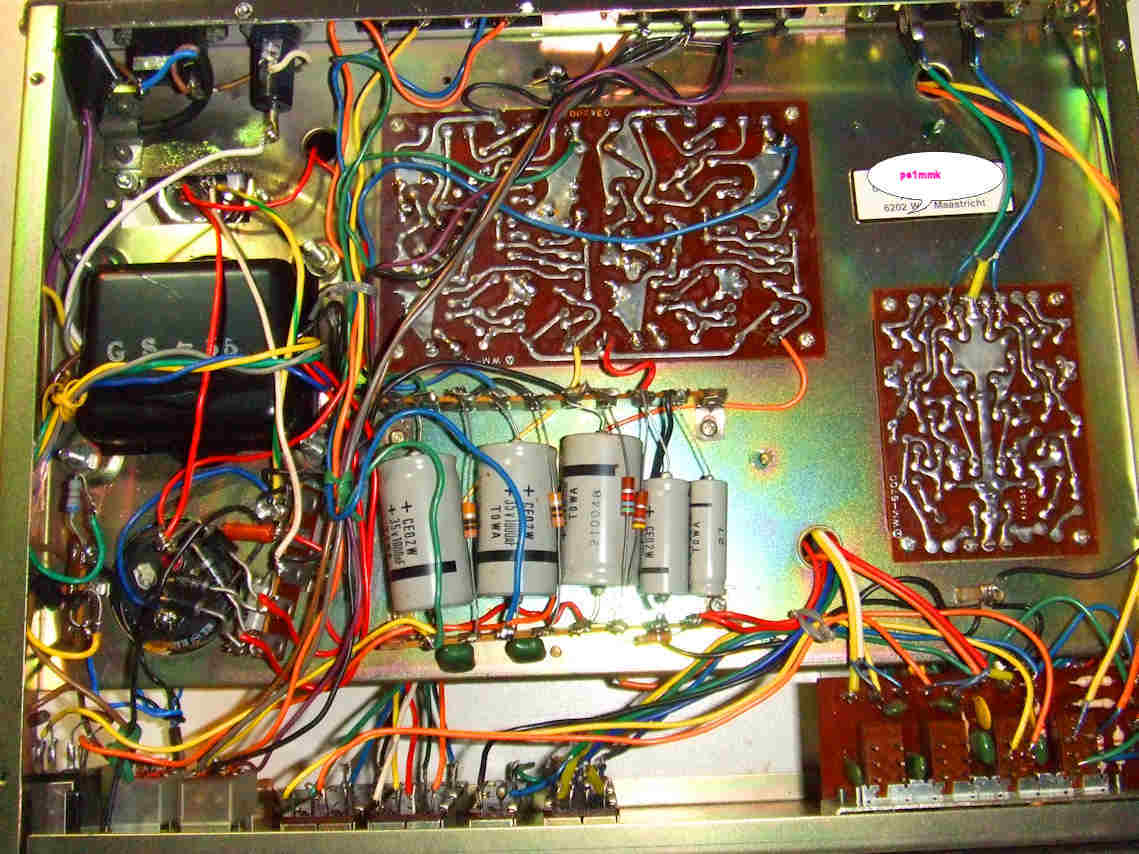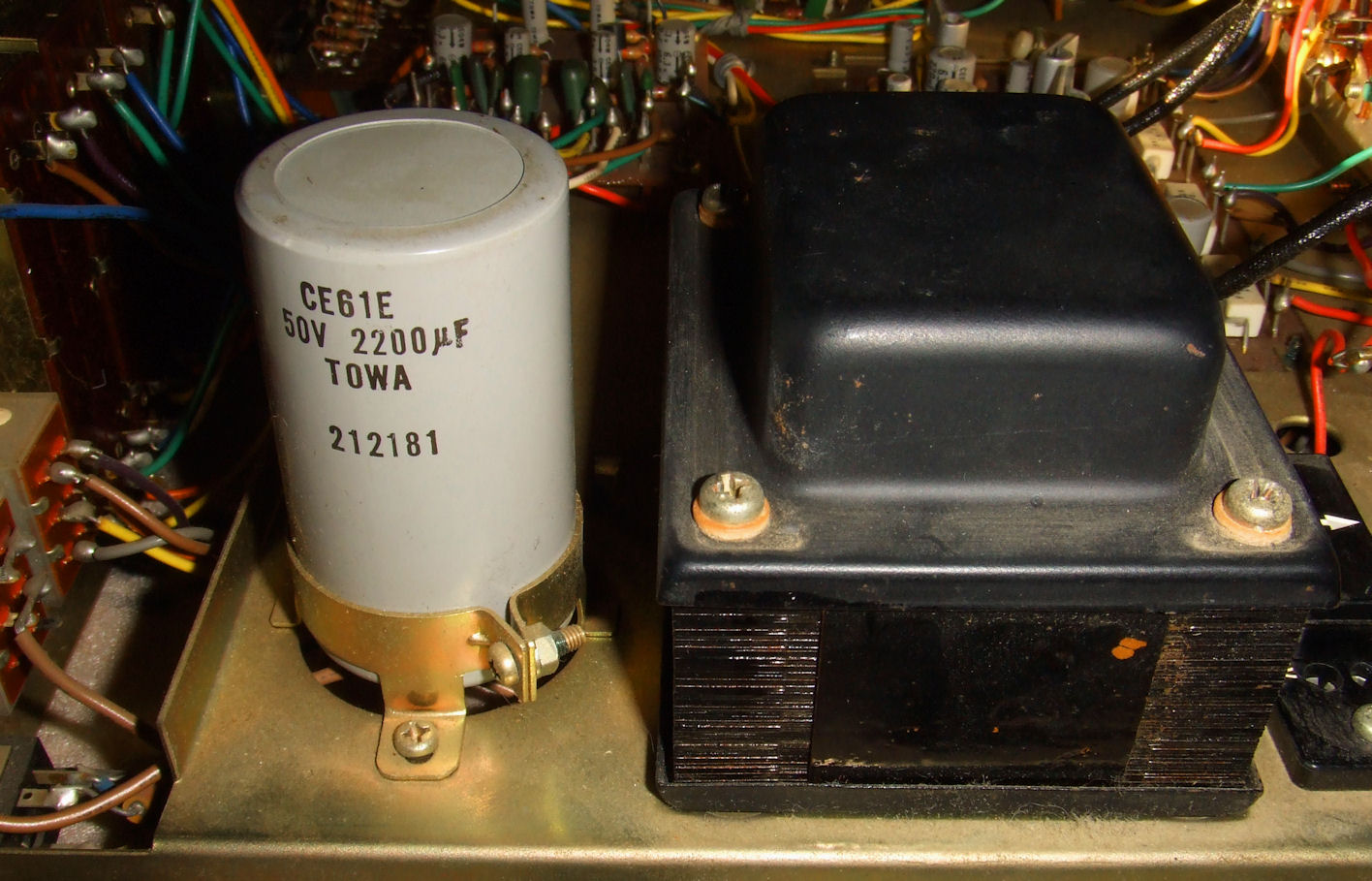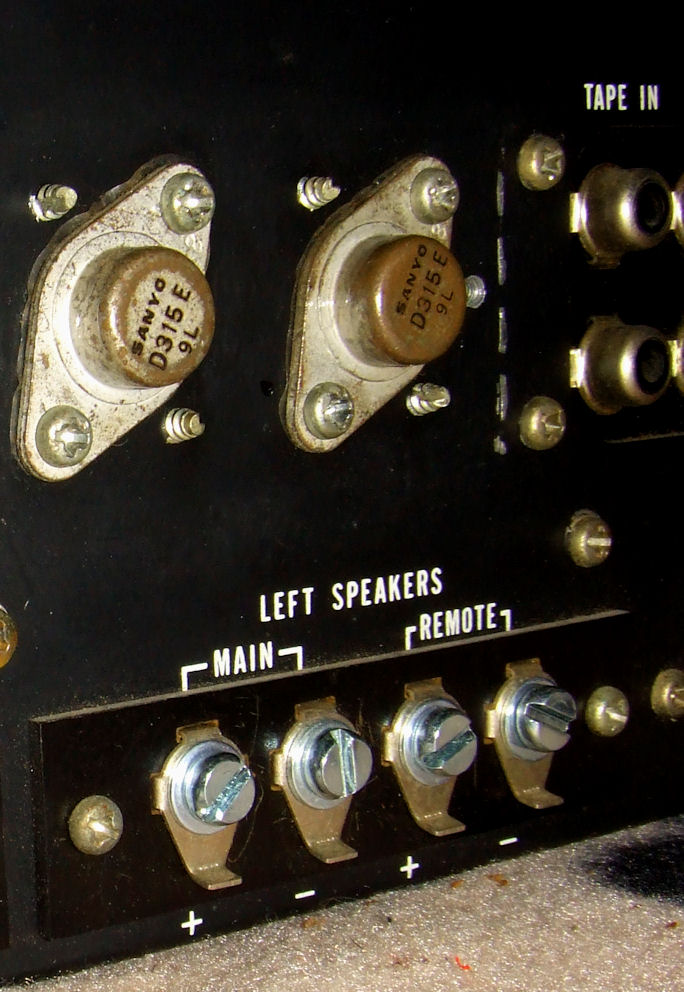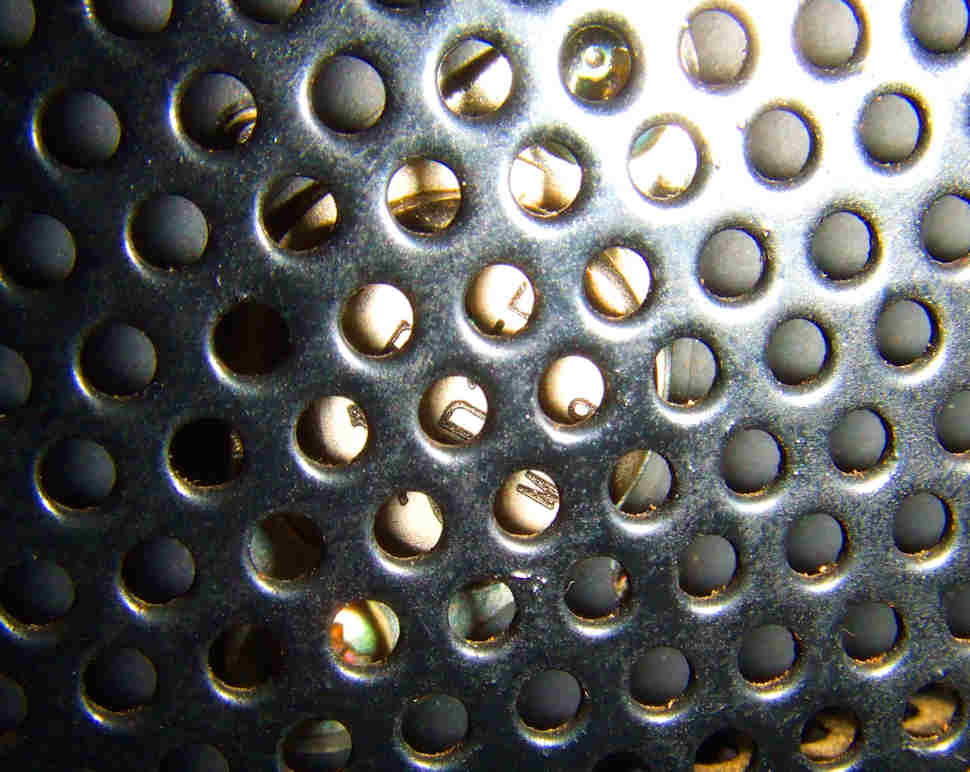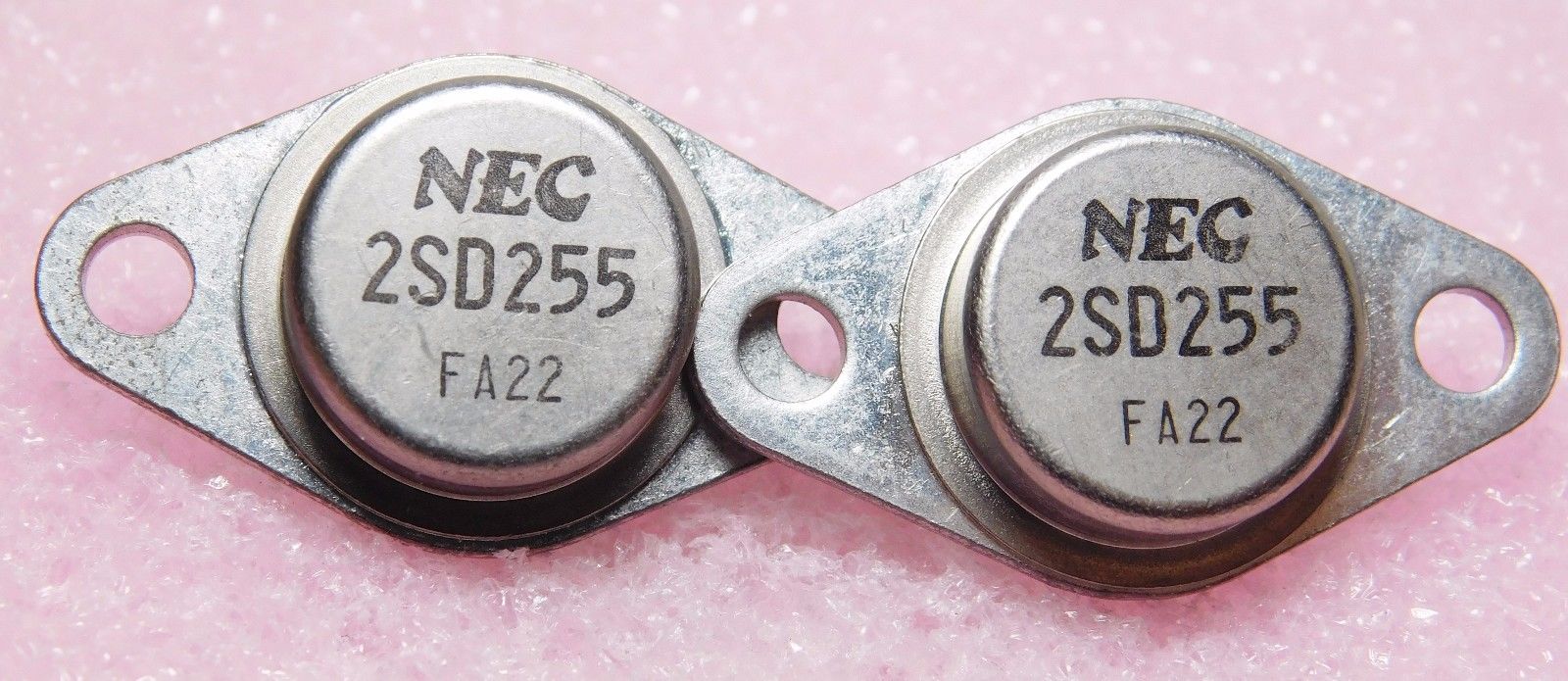![]()
General:
Lower priced audio amplifier from the 1960's with nice specs, good design and very good sound.
Special futures:
This amp has a very nice and good design, has a good look and is well constructed.
This amp was made in Japan for Monarch/Monacor company USA, but soon was offered to many audio
companies in Europe too.
The Prinzsound is a EU (UK) example of this rebranded amp, the Japanese companies made this amp
for other EU countries like Germany with DIN sockets too.
Some of the main production companies involved (among many) in the construction of this amplifier in Japan were
Nippon Sound co. Ltd and Cometro electric co. Ltd. and Nikko electric co. Ltd.,
these were also a subcontractor to many other companies in Japan too, such as Teleton, Aiwa, Lafayette, RadioShack,
Tandy, Realistic, Audiosonic, Dixons, Azden, Proton, Monarch, Prinzsound, Cybernet, Standard, Marantz, Luxman,
Comet, Hakkoh, Sansui, Yamaha, Tokyo, Copal, Rikoh, Nikko, Rotel, Sony, Kenwood, Akai, Nakamichi, etc.
All these companies in Japan worked together and bought and sold electronic parts for their audio industry,
it was at the time a huge electronic construction network spread all over Japan.
The T-Tag was an indication of this widely spread collaboration in Japan, see the T-Tag picture below.
Nippon Sound and Cometro even used their own company name on some equipment too.
This amplifier was cheaper at the time but certainly as good as the most expensive competitors of exclusive brands
like the Luxman SQ700, the Sansui AU101, the Akai AA5210, and the Kenwood KA4002 and many more.
User Manual:
Click here to download the usermanual in PDF format
Front view ^
Specifications:
General:
Manufacturer: Monarch / Prinzsound
Model: SA-600 / SA-2001
Type: Integrated amplifier
Year of construction: 1969 - 1972
Made in: Japan
Color: front black, wooden case
Power consumption: 80 W max.
Dimensions (WxHxD): 375 x 130 x 267 mm
Weight: 7 kg
Original price approx: ~425 DM
Connections:
inputs:
Input sensitivity:
Phono MM: 2.5 mV
Phono ceramics: 50 mV
Tuner: 200 mV
AUX: 200 mV
Tape Play 200 mV
outputs:
Tape Rec
Headphone
Connections for 2 pairs of speakers
Technical specifications:
Continuous power RMS:
8 ohms: 2x 18 Watts
4 ohms: 2x 22 Watts
Dynamic performance:
8 ohms: 2x 25 Watts
4 ohms: 2x 30 Watts
Total harmonic distortion at RMS: 0.5% at 8 ohms
Damping factor: 40
Frequency response: 15 - 60,000 Hz
Signal to noise ratio:
Phono: 70 dB
High level: 85 dB
Tone:
Bass: ± 10 dB at 100 Hz
Treble: ± 10 dB at 10 kHz
Loudness: yes
High Filter: yes
Low Filter: yes
Special features:
Sliders for balance, bass, treble, volume.
Mono / stereo switch
Schematic:
The schematic diagram of this amp is very common, like other brands have issued amps with similar schematic diagram,
the Luxman SQ700 is an example,
and the Sansui AU101, AU222 and AU505, and the Akai AA5210, and the Kenwood KA2000 and KA4002 are too.Click here to download the schematic diagram in PDF format
Power amplifier board not updated ^
Power amplifier board updated ^
Modifications:
Updating this amp is very rewarding: you get a hi-quality HiFi amp that will last for many years.
The NEC power transistors 2SD255 are of exceptional quality, if broken replace with the
same transistors or use Sanyo 2SD315 or Sanken TO66 package equivalents.If driver transistors are broken, take off the heatsink fin of the broken ones and mount these fins to the
replacement transistors like the 2SB647A/2SD667A complementary pair.Most Towa electrolytic capacitors are out of specs and should be replaced all over the amplifier.
Updating the power supply section is a must as this section is not up to modern standards anymore.
Apply power-supply star topology.Replace the tiny power supply diodes for 100V 3A diodes as shown on the pictures.
Some transistors in the pre-amp section can get quite noisy, in mine the tone-amp transistors needed to be replaced,
as the 2SC900 on board # 020200 in one channel produced quite some hiss. I used BC550C.
The first transistor in the power amplifiers 2SC945 on board # 030200 is often also a cause of noise and rumble.Check the power transistor sockets:
if the output transistors had many cycles of hot/cold, the sockets may have bad connections to the base & emitter,
the power transistor essembly's must be taken apart and the sockets must be cleaned. Also apply fresh heatsink grease.Set the power transformer to 240 V line voltage when you are in Europe,
the used power transformer will break down as its not designed for Europe's today 230+ Voltage in the standard selected 220V position.Another rather more radical modification is the "input selector circuit update".
Although this update is not required for a normal correct functioning amplifier, the sound quality improves when the input
of 'tuner' and 'aux' is not fed to the RIAA amp (with riaa correction switched off) by the selector-switch as is in original circuit design, but directly switched to the tone-amp section input, bypassing the RIAA amp:
as in fact the amplification by this amp section is not required theoretically:
the total amplification is sufficient when directly connected to the input cap of the tone amp.
In practise it means you have to change the wiring to the input-selector switch and make the circuit so
that all functions (like the loudness switch etc.) keep on working, while "discarding" the RIAA amp in
the 2 mentioned positions: 'aux' and 'tuner'.
Now the RIAA amp is only selected in the 'phono' position as it technically should be.
The distortion, hiss & frequency-curve values in the updated situation are much better and
the input sensivity & impedance can be chosen by simple resistor value instead of undesirable amplification feedback.
The 'Tape Monitor' position can be used as an example how the circuit should be after the modification,
also some parts will be obsolete like the 22k Ohms resistors on the RIAA board # 010200,
and some input resistors at the input connectors.
You may lift the S/N values up to 100 dB for the Aux input and 85 dB for the Phono input after the full restore, including this radical upgrade.
Updating the power supply and replacing the burnt power transformer, as there was a little fire in this amp ^
The fire in the amp was caused by the detrimental voltage-change of the power line in Europe of 220V to +230V,
this new transformer is set to 240V line voltage.
The above replacement transformer came from a Monarch receiver that was broken. The secondary rectified initial voltage inside should be 45 Volts DC, but with this transformer its ~ 49 Volts DC, the electronics & parts used of this Monarch amplifier are so well designed that this amp can handle this approx. 10% higher voltage without any problem, all other voltages meet the original specs, the output power of the power amps is consequently some 10% higher.
Sound:
The sound is very good.
The tone amp board ^
The RIAA amp in its shield box ^
The shield hood removed: the RIAA amp board: incorporating traditional 2 transistor per channel phone amps ^ this amp section is used in all input selector positions.
The bottom view ^
The power supply that should be modified ^
The 2SD315 (E version) by Sanyo is used in some versions ^
Power transistor NEC 2SD255 in the cover ^
NEC 2SD255 in TO66 package.
![]()
![]()
